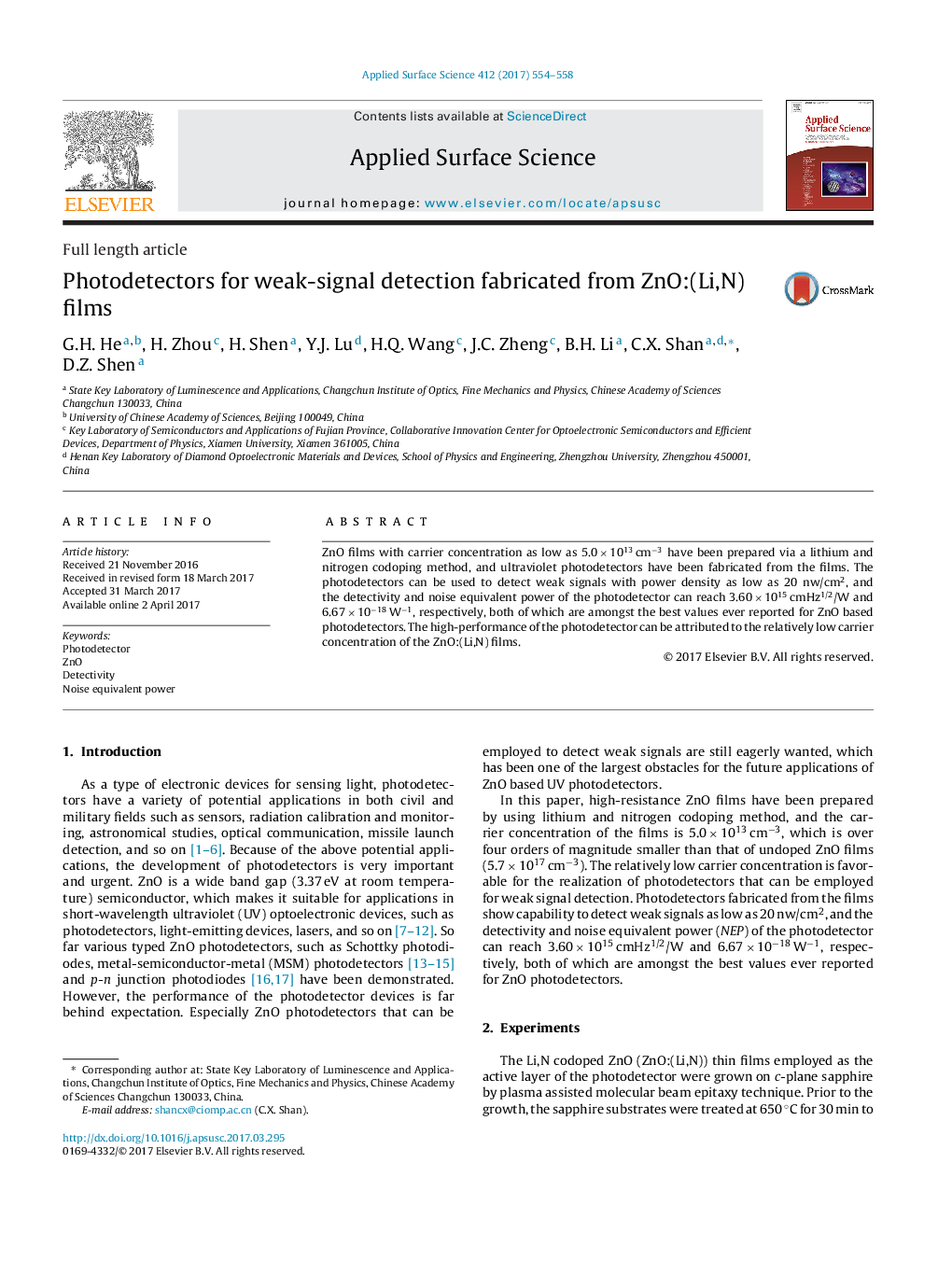| Article ID | Journal | Published Year | Pages | File Type |
|---|---|---|---|---|
| 5347064 | Applied Surface Science | 2017 | 5 Pages |
•ZnO films with carrier concentration as low as 5.0 × 1013 cm−3 have been prepared via a lithium and nitrogen codoping method.•Ultraviolet photodetector that can detect weak signal with power density as low as 20 nw/cm2 have been fabricated from the ZnO:(Li,N) films.•The detectivity and noise equivalent power of the photodetector can reach 3.60 × 1015 cmHz1/2/W and 6.67 × 10−18 W−1, both of which are amongst the best values ever reported for ZnO photodetectors.
ZnO films with carrier concentration as low as 5.0 × 1013 cm−3 have been prepared via a lithium and nitrogen codoping method, and ultraviolet photodetectors have been fabricated from the films. The photodetectors can be used to detect weak signals with power density as low as 20 nw/cm2, and the detectivity and noise equivalent power of the photodetector can reach 3.60 × 1015 cmHz1/2/W and 6.67 × 10−18 W−1, respectively, both of which are amongst the best values ever reported for ZnO based photodetectors. The high-performance of the photodetector can be attributed to the relatively low carrier concentration of the ZnO:(Li,N) films.
